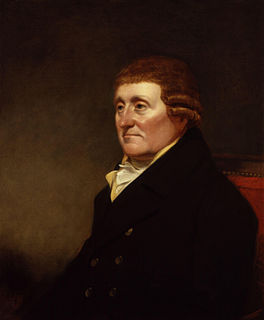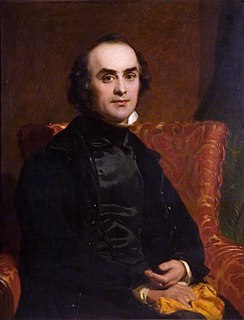John Harper (1809–1842) was an English architect.

John Harper (1809–1842) was an English architect.

Harper was born at Dunkenhalgh Hall, near Blackburn, Lancashire, on 11 November 1809. He studied architecture under Benjamin and Philip Wyatt, and when with them prepared the designs for Apsley House, York House, and the Duke of York's Column. [1]
Harper went into practice as an architect at York. When travelling in Italy to studying art, he caught a malarial fever in Rome. While still in a weak state he went on to Naples, where he died on 18 October 1842. William Etty, David Roberts and Clarkson Stanfield were among his friends. [1]

Harper was employed by the Duke of Devonshire at Bolton Abbey, by Lord Londesborough, and others. Some of his best-known works were St Peter's School, York, the Roman Catholic church at Bury, Lancashire, and Elton church in the same town. [1]
| Wikimedia Commons has media related to John Harper . |
![]() This article incorporates text from a publication now in the public domain : Lee, Sidney, ed. (1895). "Harper, John (1809-1842)". Dictionary of National Biography . 42. London: Smith, Elder & Co.
This article incorporates text from a publication now in the public domain : Lee, Sidney, ed. (1895). "Harper, John (1809-1842)". Dictionary of National Biography . 42. London: Smith, Elder & Co.

Sir William Goscombe John was a prolific Welsh sculptor known for his many public memorials. As a sculptor, John developed a distinctive style of his own while respecting classical traditions and forms of sculpture. He gained national attention with statues of eminent Victorians in London and Cardiff and subsequently, after both the Second Boer War and World War I, created a large number of war memorials. These included the two large group works, The Response 1914 in Newcastle upon Tyne and the Port Sunlight War Memorial which are considered the finest sculptural ensembles on any British monument.

Frederick William Pomeroy was a prolific British sculptor of architectural and monumental works. He became a leading sculptor in the New Sculpture movement, a group distinguished by a stylistic turn towards naturalism and for their works of architectural sculpture. Pomeroy had several significant public works in London and elsewhere in the United Kingdom, notably in Belfast. His work in London includes the figure of Lady Justice (1905–1906) on the dome of the Old Bailey.
The Lady Margaret Professorship of Divinity is a senior professorship in Christ Church of the University of Oxford. The professorship was founded from the benefaction of Lady Margaret Beaufort (1443–1509), mother of Henry VII. Its holders were all priests until 2015, when Carol Harrison, a lay theologian, was appointed to the chair.
John Oldham (1779–1840) was an Irish engineer, now best known for the Oldham coupler.

Archer James Oliver was a British painter, principally active as a portraitist.
Johnson Grant (1773–1844) was a Scottish priest of the Church of England. He was alleged to be an evangelical early in his ministry, but his mature written works lampooned evangelicals in vitriolic fashion and modern scholarship views Grant as a High churchman.

Thomas Dunham Whitaker (1759–1821) was an English clergyman and topographer.
John Orum was an English churchman and academic. He was vice-chancellor of Oxford University, and Archdeacon of Barnstaple from 1400 to 1429.

John Prescott Knight (1803–1881) was an English portrait painter. He was secretary of the Royal Academy from 1848 until 1873.
Joseph John Scoles (1798–1863) was an English Gothic Revival architect, who designed many Roman Catholic churches.

John Parsons Earwaker (1847–1895) was an English antiquary.
Thomas Percival (1719–1762) was an English antiquary.
Henry Petrie (1768–1842) was an English antiquary and official.
George Ayliffe Poole (1809–1883) was an English Anglican cleric and a writer on religion, church architecture and history.
Frederick Mackenzie (1788?–1854) was a British watercolourist and architectural draughtsman.
John Newman (1786–1859) was an English architect, known also as an antiquarian.
John Overton (1763–1838) was an English clergyman, known for his defence of evangelicals at the start of the 19th century.

Louis Loewe (1809–1888) was a Silesian linguist.
Jonathan Robert Ogden was an English composer, known for Holy Songs and Musical Prayers, published in 1842.